Finches with Cool GoPro photos in Vermont
This past season one reason I was so excited to experience winter was to see the birds and hopefully finches. Winter time offers a different way of seeing birds. In the summer, food sources are so much more abundant and birds have so many places they could go for a feed. In the winter, news of a consistently filled feeder travels fast in the bird community.
The most prominent birds we saw this winter was the American Goldfinch and the Blue Jay. With the aid of our GoPro and wildlife camera
, we were able to get a close up look at the finches and other birds visiting the feeders.
Here is a look at what we saw:
Look at all those finches! It went pretty much like this: there were no finches and then I looked out the window and there were tons of finches!!! It was just like the snap of a finger that there were none and then they all seemed to get word at the same time of the hot new feeding spot in the forest. It was a very cool introduction to the birds. (note: I did speed up the videos for effect.)
I loved looking out the window to the line up of birds on the line. On our days off, I would switch my whole work space so I could sit by the window and look outside as I typed away.
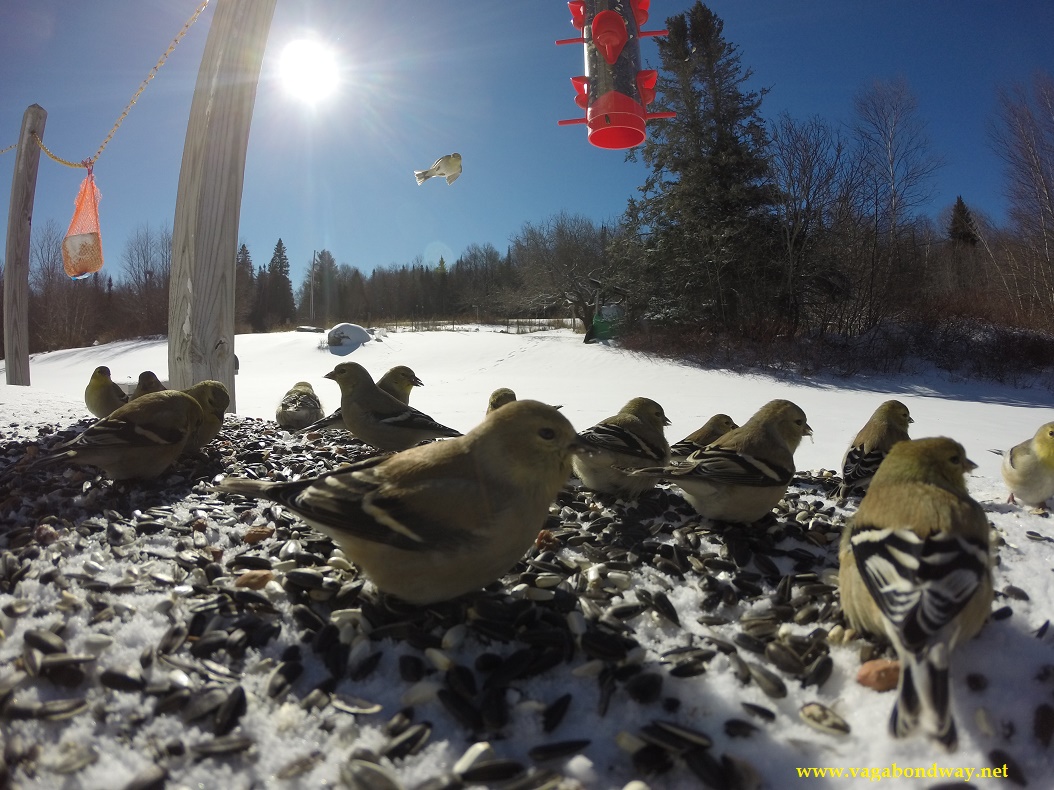
On sunny days, it was so pretty to watch these little golden specks flying around. These finches are in their drabber, winter plumage. In the summer they will go back to being a brighter yellow.
I just loved watching these little guys hustling about throughout their day.
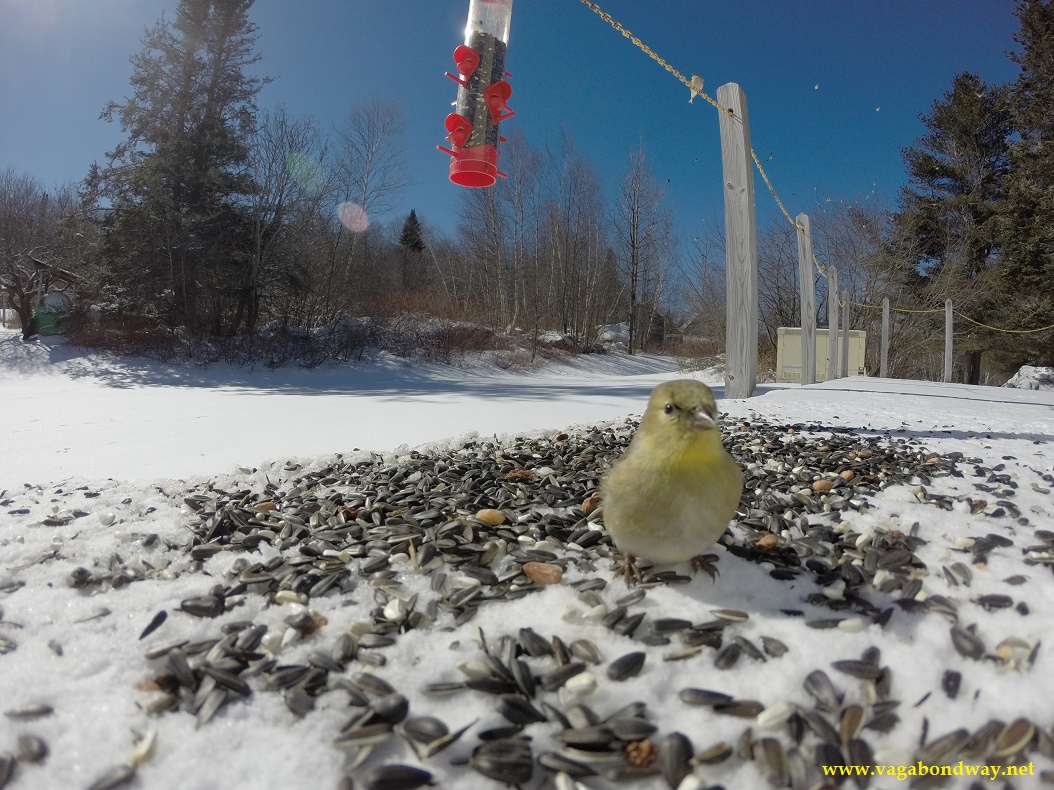
After a little investigation, they didn’t seem to mind the camera too much.
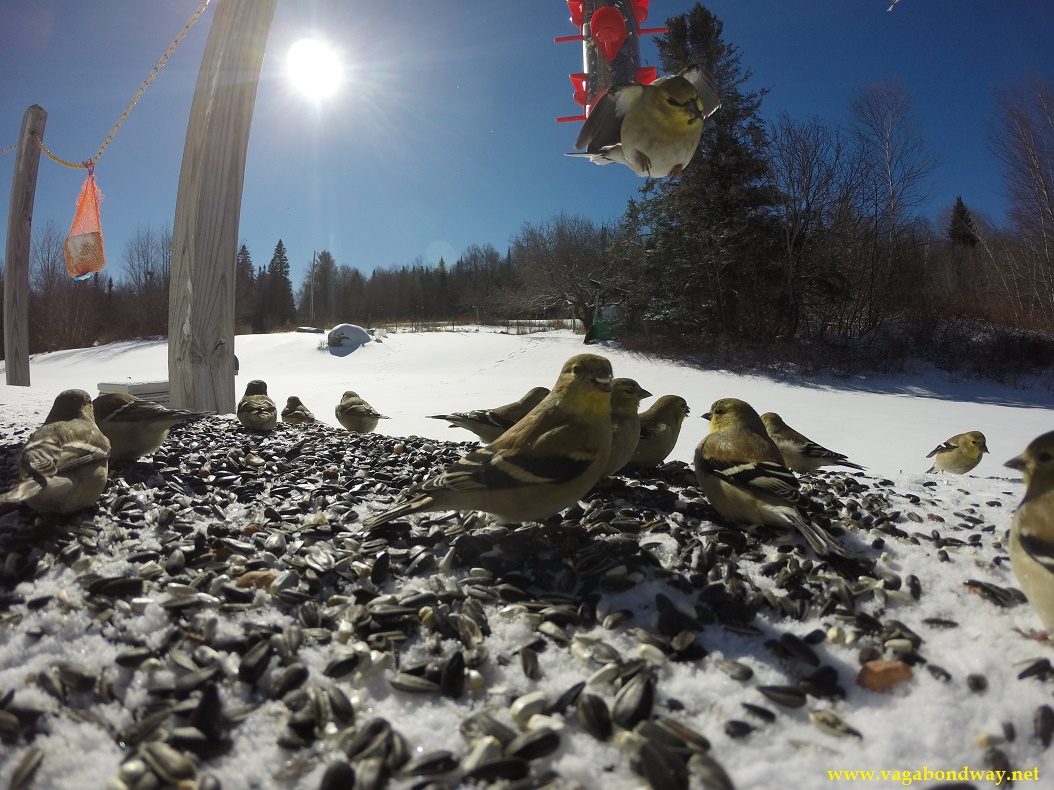
I just loved these snapshots, like those little tucked feet, that normally we could not see.
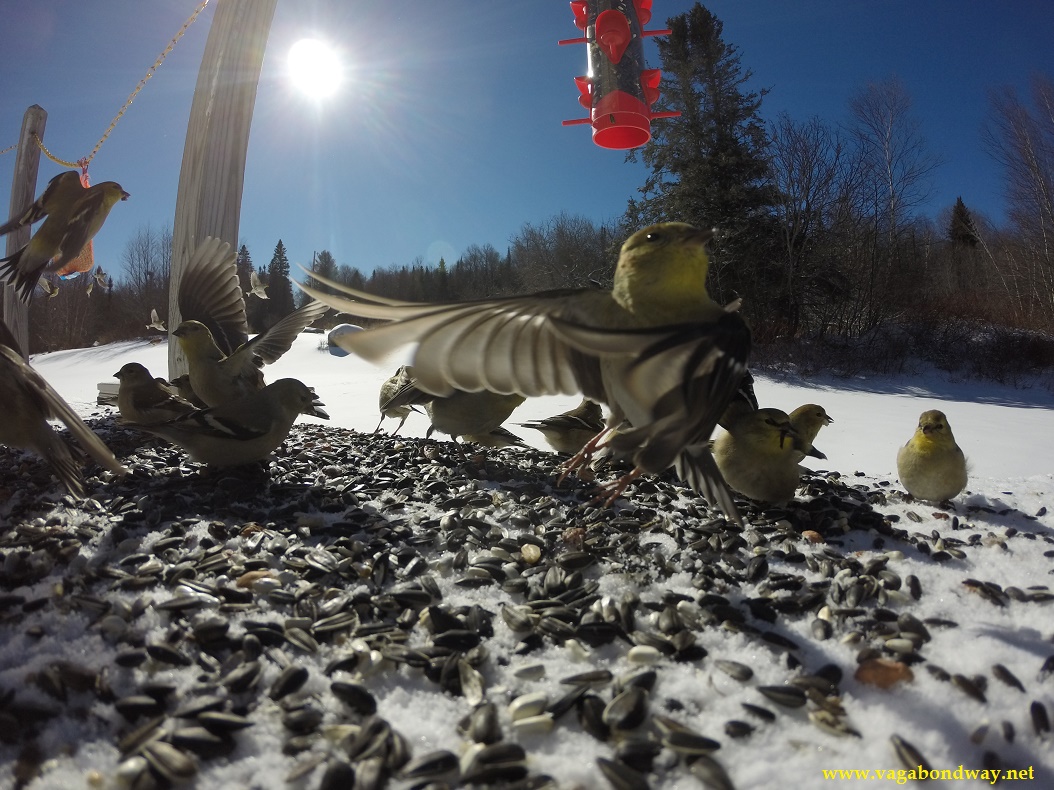
To me their wings and feathers were so beautiful with the back lit sun.
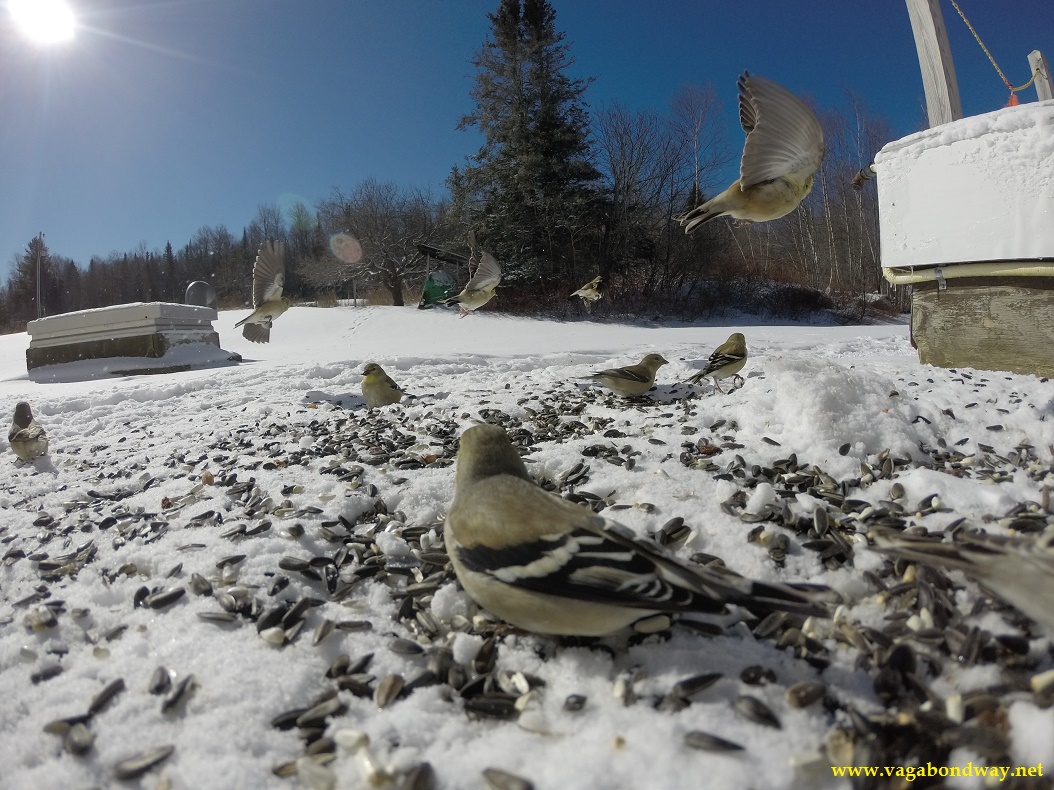
American Goldfinches like open flood plains, weedy fields and other overgrown areas, especially if there is sunflower, aster and thistle plants about. They can be found in parks, suburban and backyard areas.
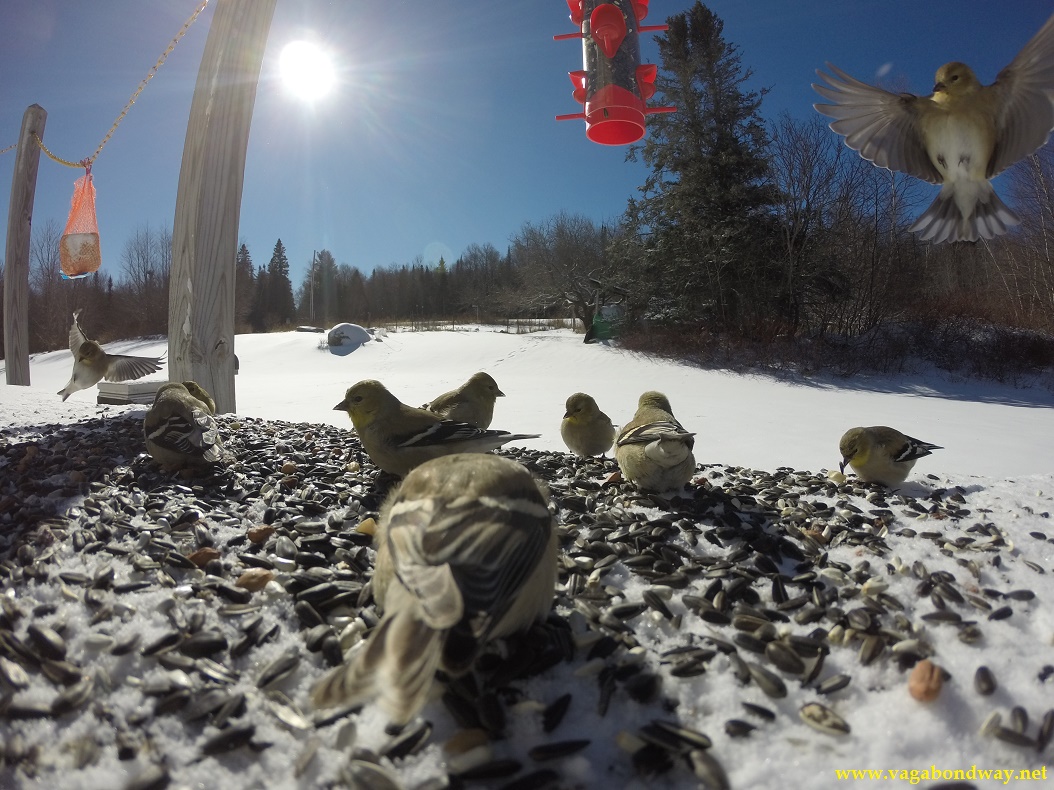
I loved staring at these wings as they come in for a landing. Although they can be found at backyard feeders any time of the year, they are most abundant in winter.
The finches are on the move!
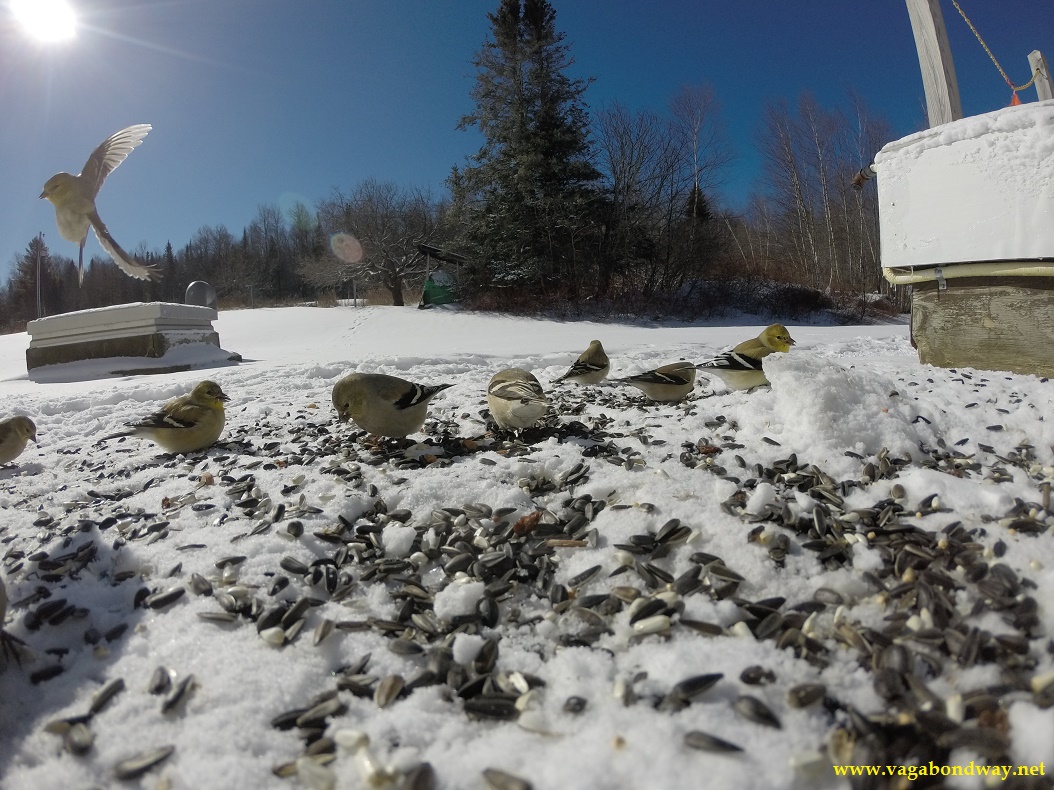
The oldest known American Goldfinch was 10 years 9 months old when it was captured and released during a banding operation in Maryland.
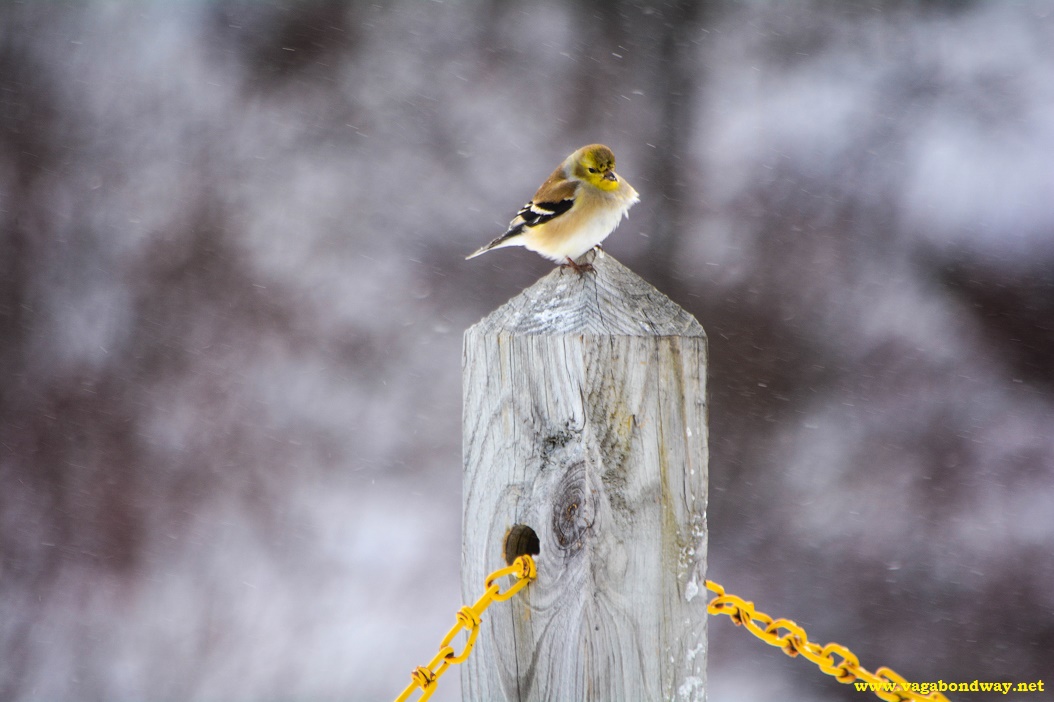
I love this one all puffed up and staying warm.
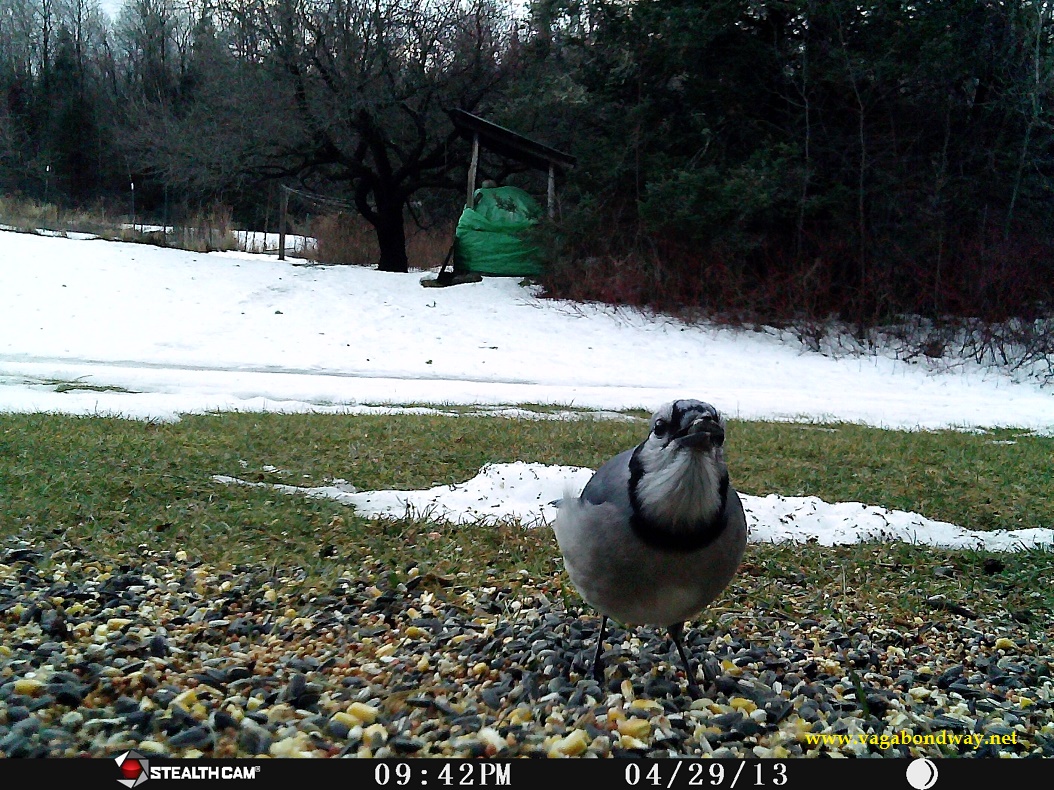
The other bird that visited the feeders a lot was the blue jay.
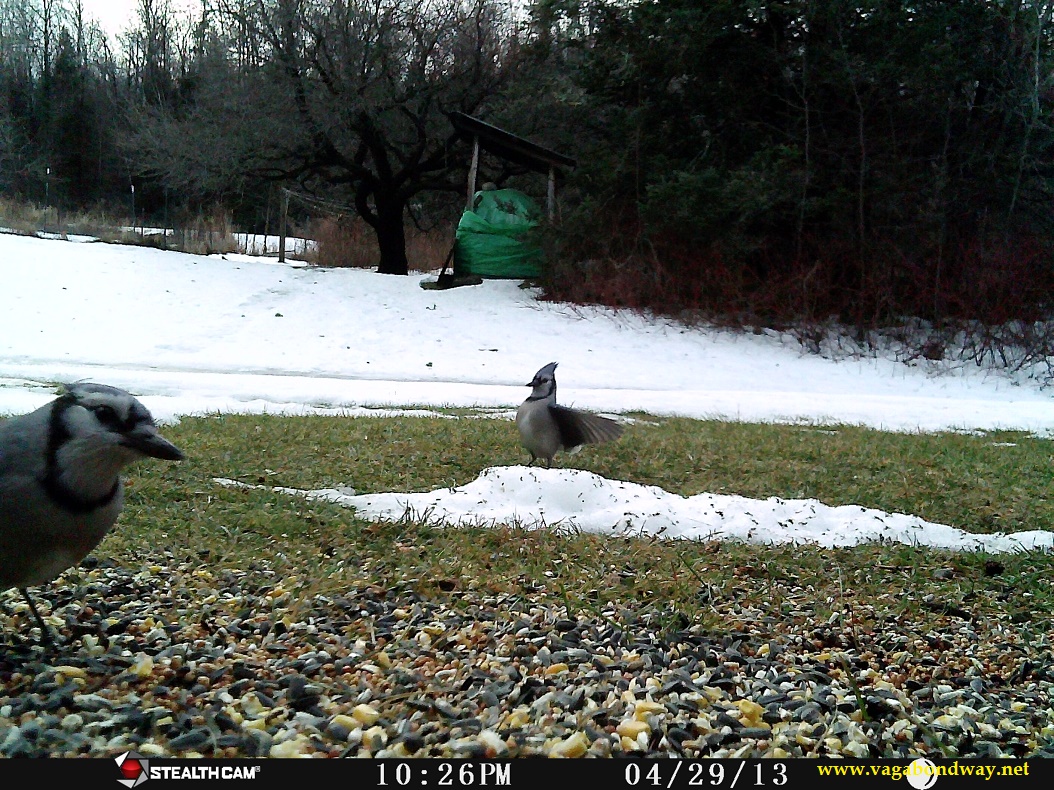
Which if you have not ever tried to photograph blue jays, for such a pushy bird they are extremely shy and fly away so easily!
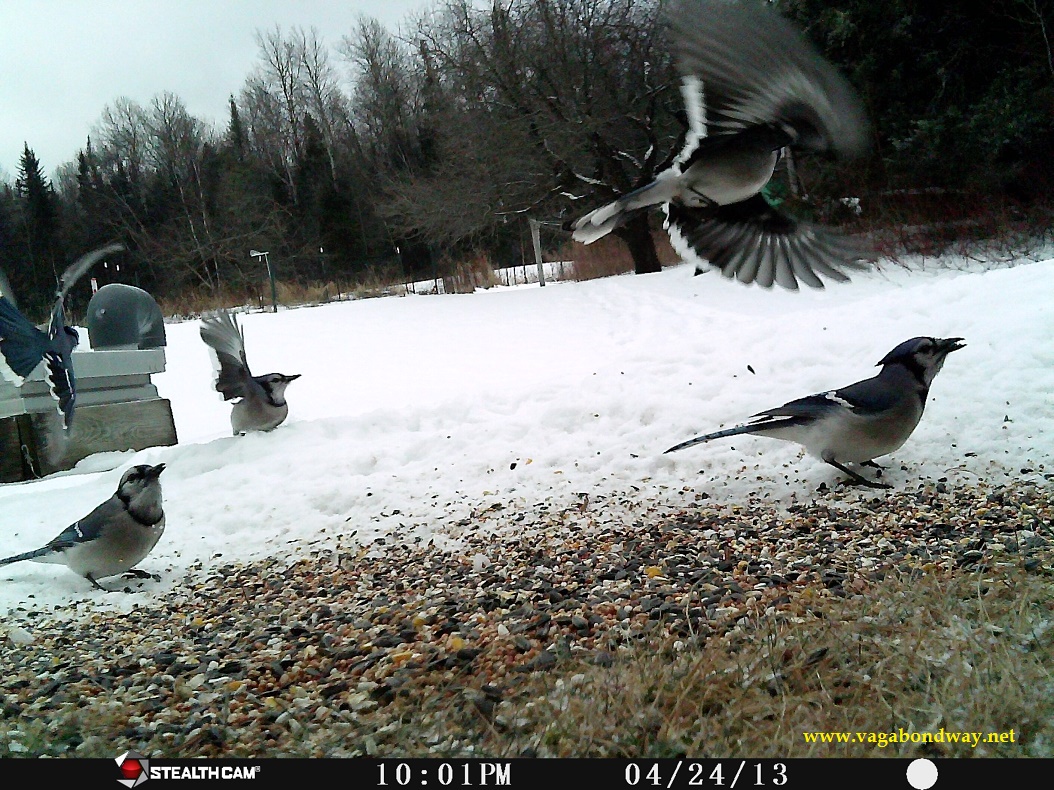
In winter, blue jays will start flocking together and you’d think for such a larger bird in a group, they wouldn’t be so afraid. But sometimes just my reflection at the window was enough to scare them away.
But at least with the wildlife cam, we got a chance to get better looks at these birds. And yes, the date is and time is still off in the wildlife camera, I never did seem to remember to change that.
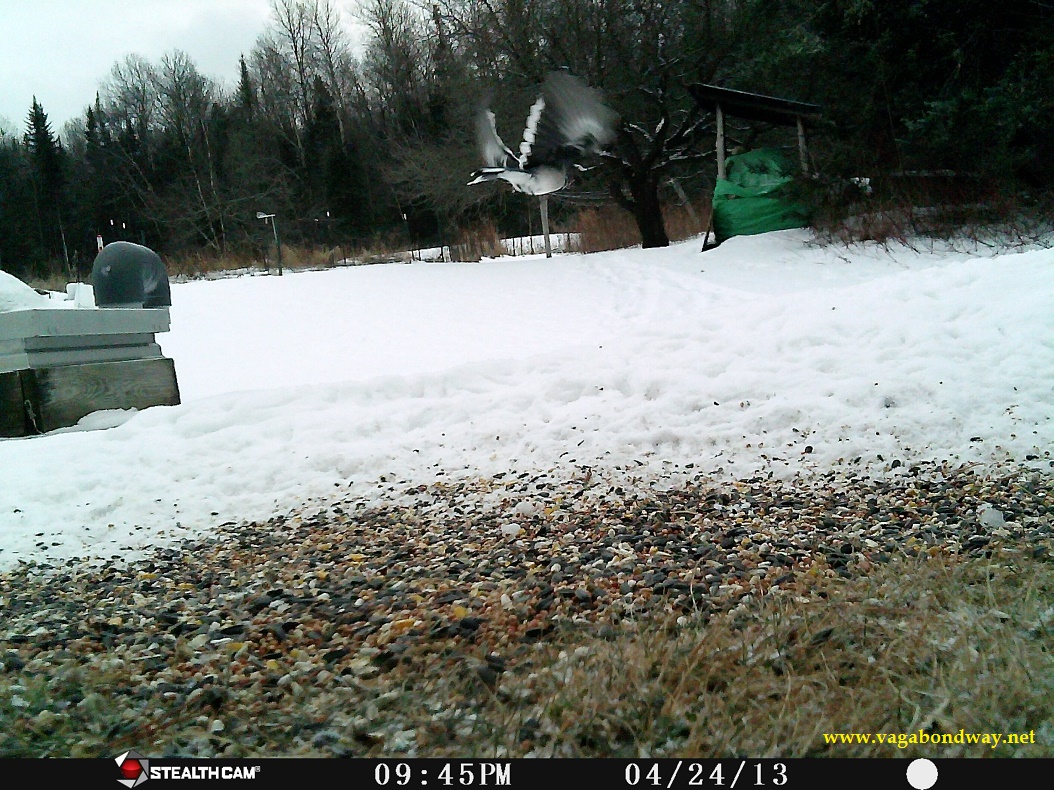
I love how this pic shows that strike of white on the wing feathers. Blue jay migration is somewhat of a mystery. Some birds seem to migrate south for one winter, yet might stay north the following winter. Young jays appear to be more likely to migrate than adults, yet a good number of adults will also migrate. Scientists are still studying their complex behavior.
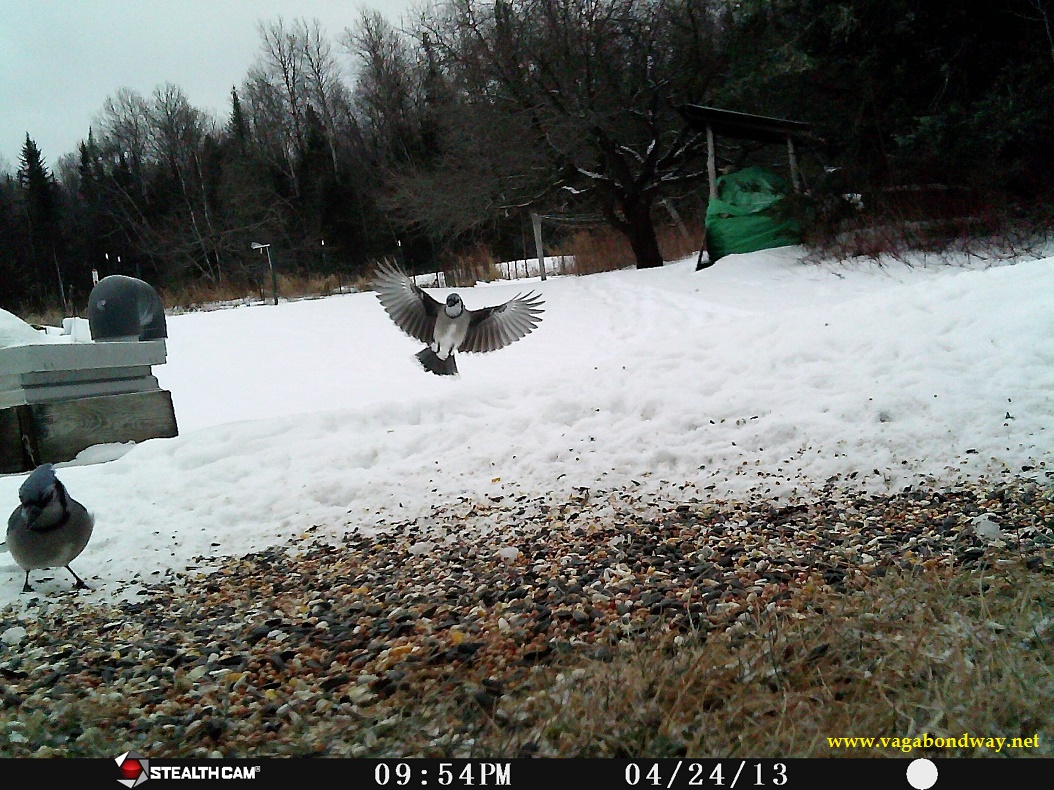
One of their favorite foods is acorns. Blue jays are birds of the forest edges and can often be found near oak trees, suburban parks and forests.
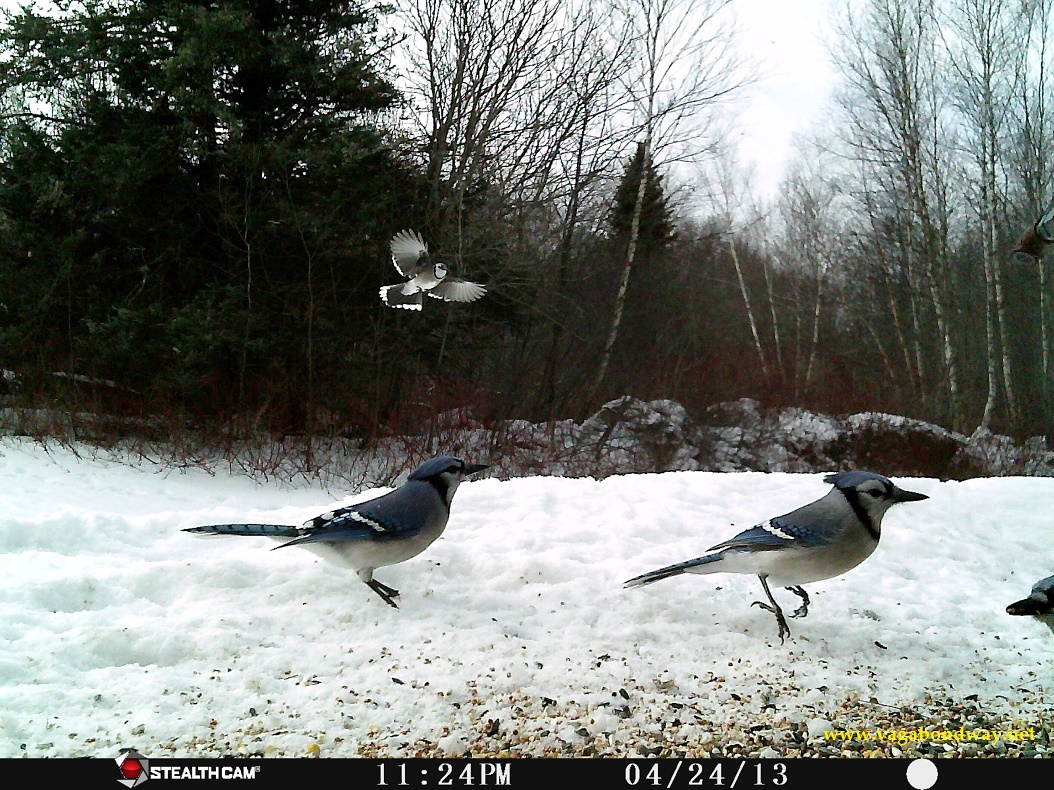
The oldest known wild blue jay was at least 17 years 6 months old when it was captured and released in an Ohio banding program.
Also got a couple shots of the black capped chickadee, which was one of my grandma’s favorite birds.
Having feeders up this past season was one of the best forms of winter entertainment. Every day was different. One day I might look out the window and count over thirty finches at the feeders. Other days there might only be ten and I’d wonder where they had all gone. Watching all the different social interactions every day provided endless amusement. And bottom line, they were all beautiful birds to watch.
So perhaps if you are prone to getting the winter blues or you are just curious to see what birds are in your winter back yard, put up a feeder and fill it with sunflower seeds or other winter bird feed for your area. One way or another your bound to see some cool bird activity out your window. To me, that is a really cool way to start the day.
***
If you want to watch birds:
Go to your local hardware store and buy a feeder or check them out online here. Yes, you can get really particular about all sorts of different, bird specific feeders. Don’t fret too much and let it overwhelm you from actually just buying a feeder. You can get a fine enough feeder for ~$10. Look either for a finch feeder or get something with a wide-ish base around the bottom so multiple types of species can perch and eat.
Sit really still. Realize you will probably have to wait longer than you will want. Photographing birds can be so hard! They are so easily startled. If you don’t have all that time, get a GoPro , set it up, walk away and come back in an hour.
The Cornell Ornithology Lab is one of the best online resources for bird information. If you would like to know more, you can read all about American goldfinches and blue jays from them.
Cornell Ornithology also offers this free guide to Backyard Bird Feeding.
We did not do this, but you can also make your own suet, which can be a great way to use up left over grease from your kitchen. Or suet is cheap to buy, you can order online here or just pick some up at grocery or hardware stores.
Happy Birding! 🙂
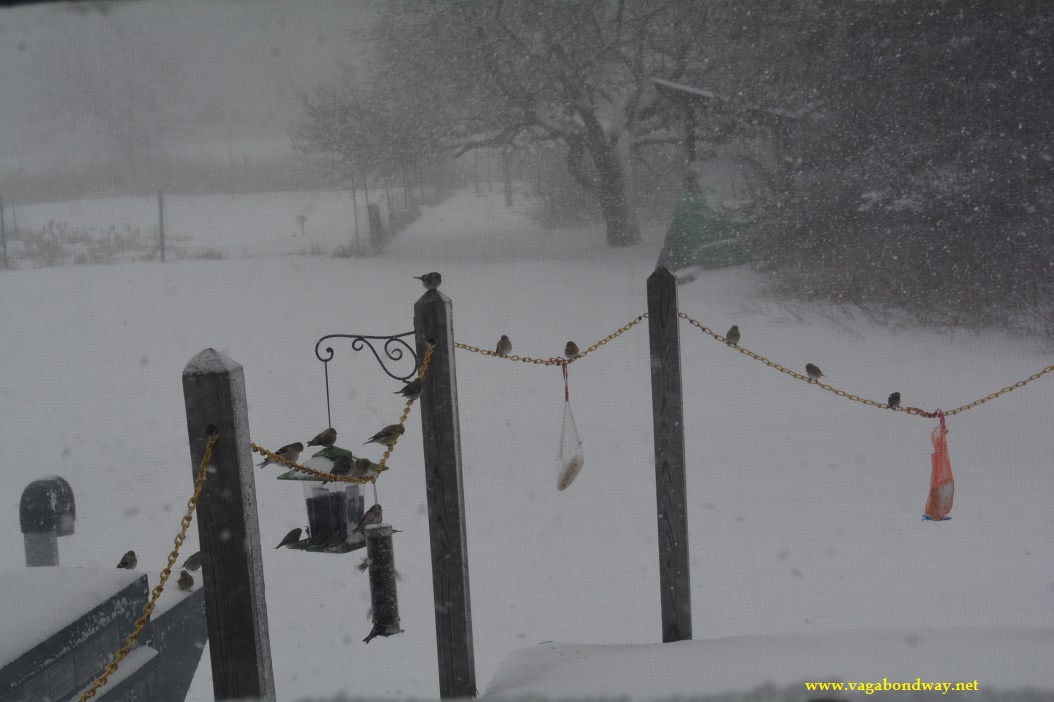
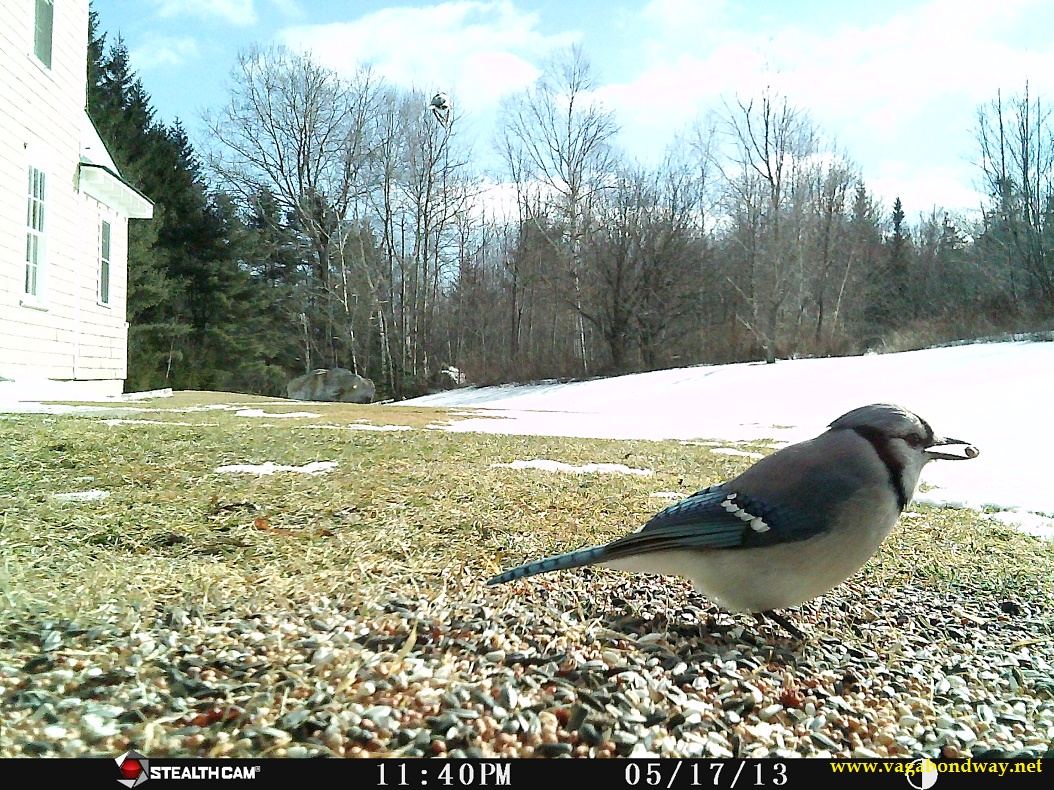
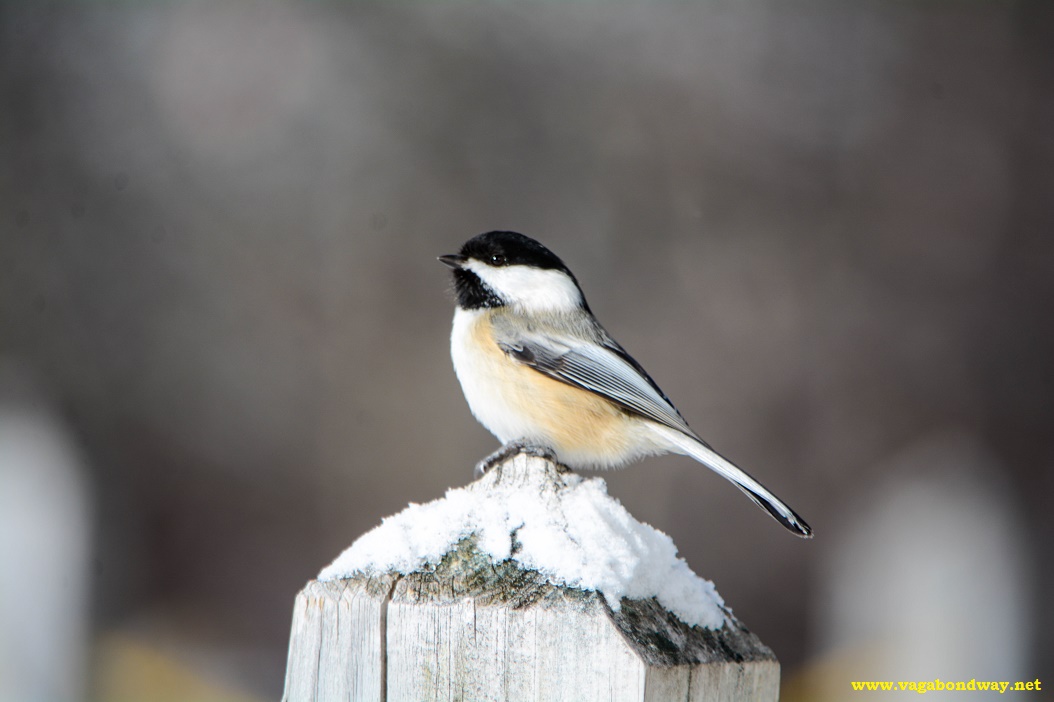
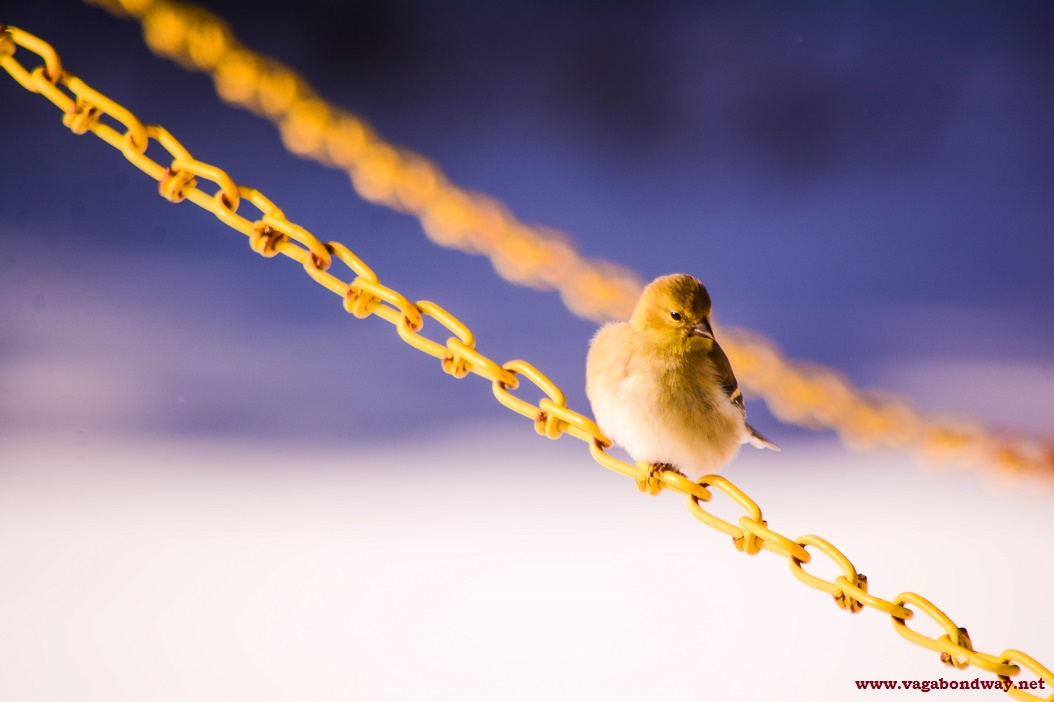
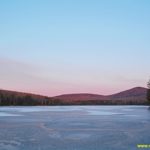 Previous Post
Previous Post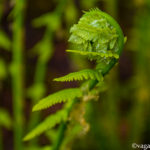 Next Post
Next Post
Lots of nice winter bird photos! They all look very appreciative.
Thanks, I think they were. They certainly kept coming back! 🙂
Your blog provided me with useful information about finches and blue jays migration. I really enjoyed the videos and pictures. I just wonder how do you keep squirrels out of your feeder?
Well, we didn’t fully succeed in keeping them out. Instead what I would advise is to only get metal feeders because they chewed up all our plastic ones. But everyone still really enjoyed watching the birds. 🙂
I was so amazed to read a blue jay can live up to 17 years!? And American Goldfinch
10 years or so. Incredible. Imagine all the odds these birds must over come to achieve
such a feat. Thanks for info
mare
I know! I didn’t realize how long they can live either. They certainly must put up an effort to live that long. That has to be one of the coolest things about banding programs is tracking birds like that and learning that information.
That was very interesting article! Thank you for sharing.
Loved all the birds pics!
Mahmoud recently posted…In The Footsteps of Legends | Top Egypt’s Historic Hotels
Awesome article! Very helpful and interesting ideas, thank you for sharing your experience.